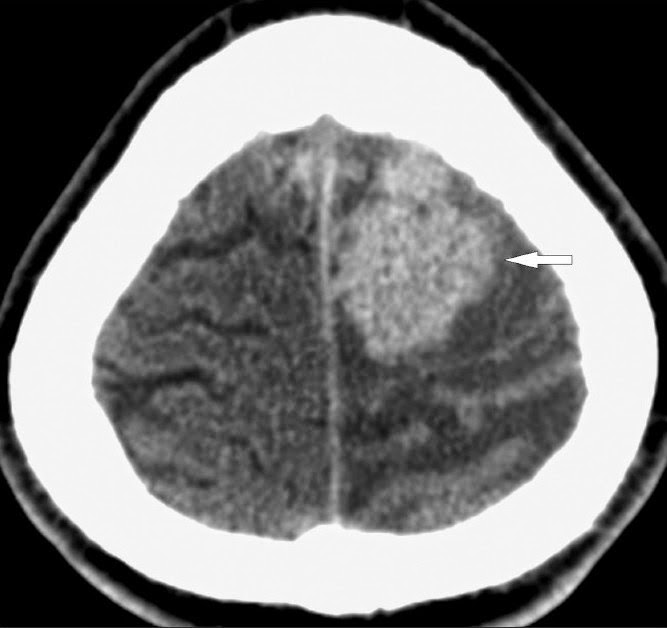A 45-year-old patient was admitted in our facility from 14th December to 17th December.
He was complaining of headache, neck pains, dizziness, neck stiffness, burning abdominal pains.
 He reported one episode of nose bleeding one week before hospitalization. But there was never bleeding in hospital.
He reported one episode of nose bleeding one week before hospitalization. But there was never bleeding in hospital.
Malaria slide was positive and so it was the Widal test, both O and H antigens at a dilution of 1:160.
HIV was tested and found negative. Brucella antibody tests were negative. RBS 6.2 mmol/l.
At FHG (full hemogram) there was nothing impressive: total WBC 9000/ml; LYMPH 12%, GRAN 80%; HB 13.9 g/dl; PLTs 96000.
BP (blood pressure) was slightly elevated, ranging from 160/90 up to 160/95 while in pain.
We decided to treat with i.v. quinine (because of the positive malaria slide) and i.v. CAF (= Chloramphenicol), because of the elevated titration of antibodies anti-salmonella.
The idea was to consider the hypothesis of subarachnoidal hemorrhage and propose CT scan if there would be no improvement.
But the patient improved quickly on treatment and he was discharged without headache, without neck stiffness and with normal BP.
There was history of heavy drinking in the days previous to the admission. The patient was also complaining of epigastric pains. A gastroscopy was suggestive of hyperemic gastritis, and he was treated with omeprazole.
LFTs (liver function tests) were done and they were within range.
On discharge the BP was 120/80.
A stool test before discharge was positive for amoeba.
The patient was therefore discharged on oral quinine, oral paracetamol, oral CAF and oral metronidazole.
But after a while the headache recurred. There were no neurological signs of lateralization, and the BP was within normal range.
There was no fever.
Not knowing exactly the cause of headache, we decided on CT scan and the result was really surprising.
We were expecting a negative imaging test, which would help us reassure the patient and maybe orientate us towards a diagnosis of migraine.
But the computerized tomography came up with an image like the one shown below (although the picture is not for the same patient).
It was a tuberculoma of the brain, a condition quite rare considering the fact that the patient is HIV negative.
We have consulted the literature and we got encouraging data on the fact that most of the patients with brain tuberculomas heal with medical treatment, without need of neurosurgery or ventriculo-peritoneal shunt, provided steroids are associated to prevent cerebral oedema and its resultant mass effect, and the sinechiae possibly leading to hydrocephaly.
Following the indications found in literature we have put the patient on anti TB treatment and prednisolone, according to the National guidelines for TB meningitis
Dr Bro Giuseppe Gaido
 He reported one episode of nose bleeding one week before hospitalization. But there was never bleeding in hospital.
He reported one episode of nose bleeding one week before hospitalization. But there was never bleeding in hospital. He reported one episode of nose bleeding one week before hospitalization. But there was never bleeding in hospital.
He reported one episode of nose bleeding one week before hospitalization. But there was never bleeding in hospital.
2 commenti:
"Seems in medicine one keeps discovering new findings every day."
Caroline
i never knew the anti-TB drugs can cross the brain-blood-barrier.
LC
Posta un commento